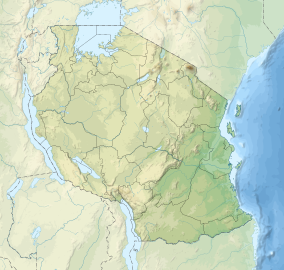Tarangire National Park
| Tarangire National Park | |
|---|---|
|
IUCN category II (national park)
|
|
 |
|
| Location | Tanzania |
| Nearest city | Arusha |
| Coordinates | 3°50′S 36°0′E / 3.833°S 36.000°ECoordinates: 3°50′S 36°0′E / 3.833°S 36.000°E |
| Area | 2,850 km2 (1,100 sq mi) |
| Established | 1970 |
| Visitors | 161,792 (in 2012) |
| Governing body | Tanzania National Parks Authority |
Tarangire National Park is the sixth largest national park in Tanzania, it is located in Manyara Region. The name of the park originates from the Tarangire River that crosses the park. The Tarangire River is the primary source of fresh water for wild animals in the Tarangire Ecosystem during the annual dry season. The Tarangire Ecosystem is defined by the long-distance migration of wildebeest and zebras. During the dry season thousands of animals concentrate in Tarangire National Park from the surrounding wet-season dispersal and calving areas.
It covers an area of approximately 2,850 square kilometers (1,100 square miles.) The landscape is composed of granitic ridges, river valley, and swamps. Vegetation is a mix of Acacia woodland, Commiphora-Combretum woodland, seasonally flooded grassland, and Baobab trees.
The park is famous for its high density of elephants and baobab trees. Visitors to the park in the June to November dry season can expect to see large herds of thousands of zebra, wildebeest and cape buffalo. Other common resident animals include waterbuck, giraffe, dik dik, impala, eland, Grant's gazelle, vervet monkey, banded mongoose, and olive baboon. Predators in Tarangire include African lion, leopard, cheetah, caracal, honey badger, and African wild dog.
...
Wikipedia

